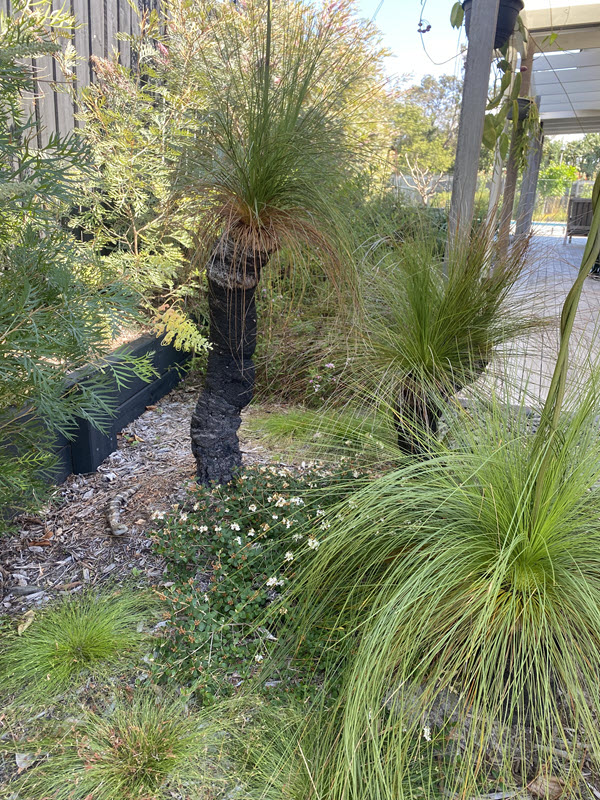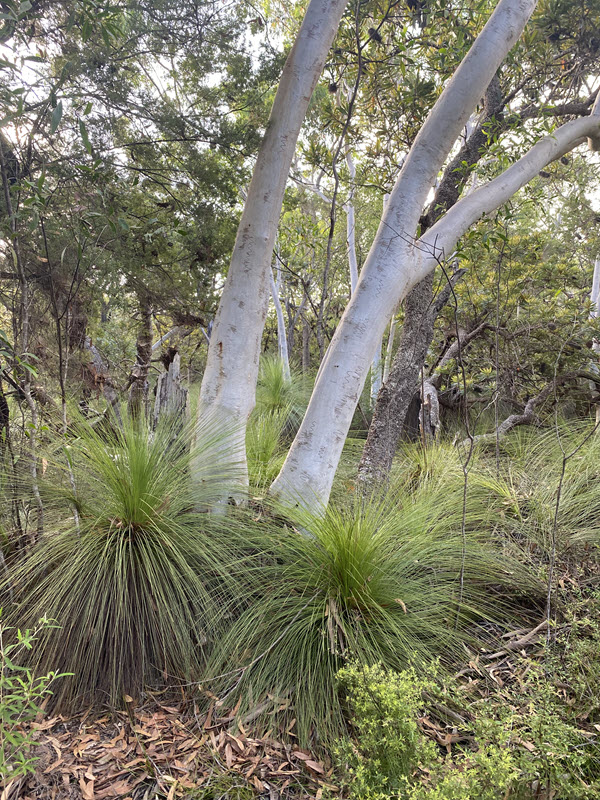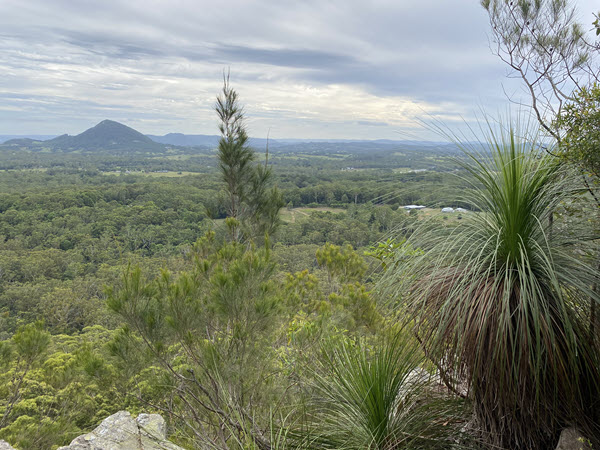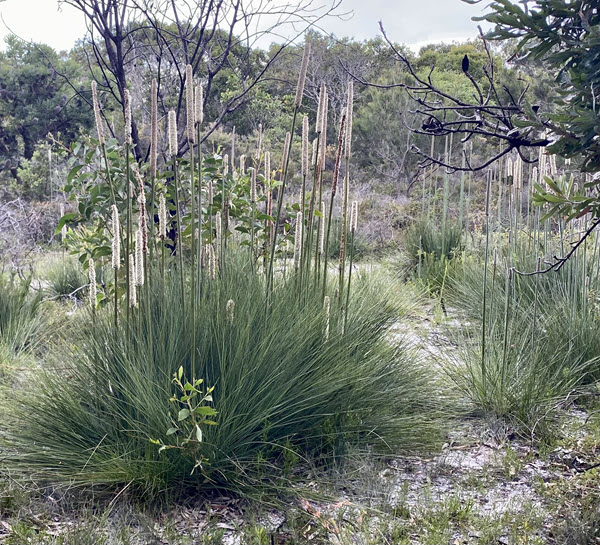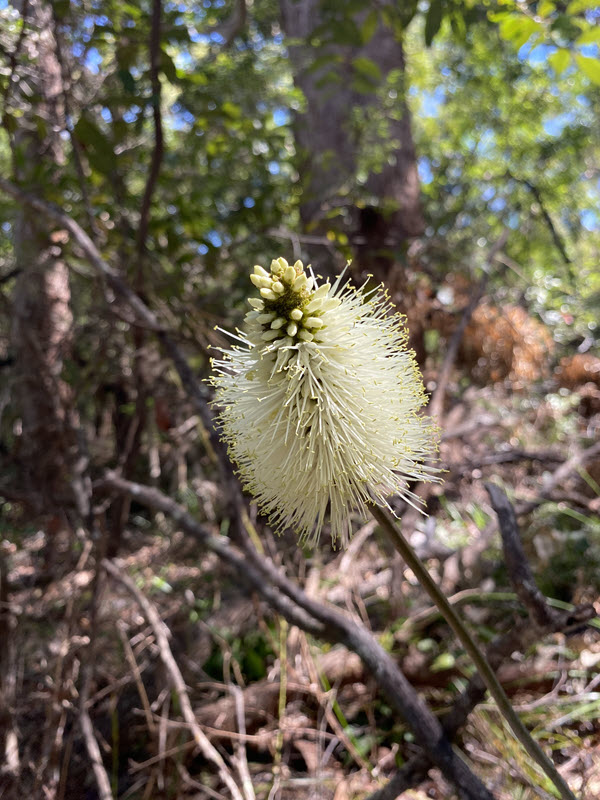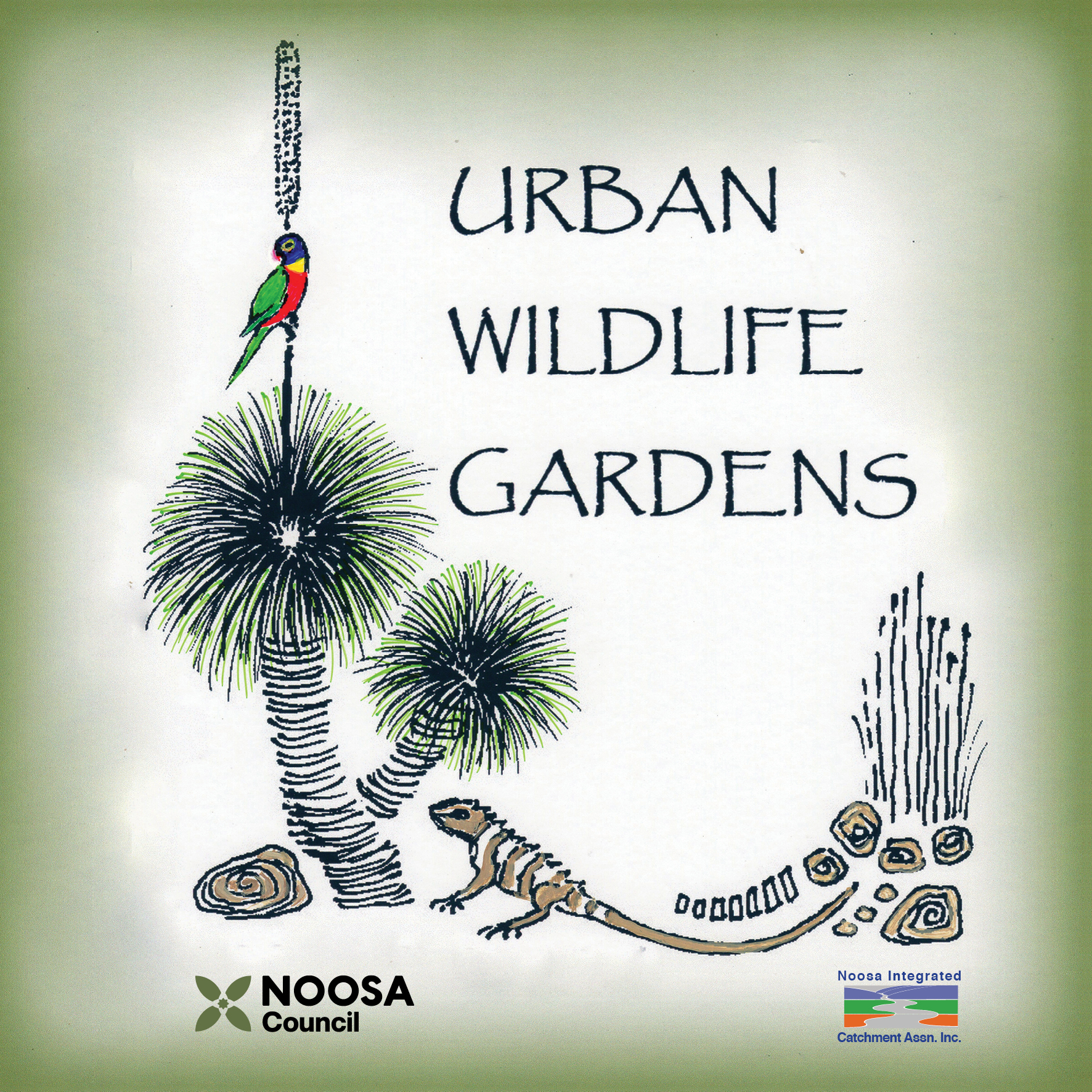Xanthorrhoeas or grass trees are an iconic flowering plant found only in Australia, and they are as striking in the bush as they are in the garden. You may have noticed impressive flower spikes on some of our local species at the moment. Xanthorrhoea means ‘’Yellow-flow’ and refers to the resin at the base of the leaves. Xanthorrhoeas provide food and shelter for a wide range of animals and insects and were an important resource for indigenous Australians.
There are around 30 species of Xanthorrhoeas in Australia and four of those species call the Sunshine Coast home.
Let’s take a look at our local species and learn how to identify them and incorporate them into our gardens!
The four species commonly found on the Sunshine Coast are
Forest grass tree – Xanthorrhoea johnsonii
Flat-leaved grass tree – Xanthorrhoea latifolia
Bottle brush grass tree – Xanthorrhoea macronema
Wallum grass tree – Xanthorrhoea fulva
So what are some of the key features of these species?
The forest grass tree (X. johnsonii) is perhaps the most commonly observed grass tree in South East Queensland and will develop an above-ground trunk (sometimes branched). The flat-leaved grass tree, (X. latifolia) will only sometimes form a trunk, whereas the wallum grass tree (X. fulva) and bottle brush grass tree (X. macronema) are always trunkless.
Some other key features of the four local species are summarized in the table below, including the typical leaf width and leaf cross section (the cross section of the leaf at the mid-point of the leaf), flower type, and examples of location. If you take all these factors into account, you will be able to correctly identify the Xanthorrhoea species.

Say you are walking in the bush and come across a Xanthorrhoea with a trunk – it is likely to be either X. johnsonii or X. latifoilia. The leaf width is the giveaway here – X. latifolia has much wider, strappier leaves (2.5 – 6 mm) than X. johnsonii (1 – 2.5 mm).
If the Xanthorrhoea doesn’t have a trunk this is a bit trickier – it could either be younger specimen of X. johnsonii or X. latifoilia which have not yet formed a trunk, or X. macronema or X. fulva (which are always trunkless). Check the leaf width and leaf cross sections (see Mangroves to Mountains for diagrams) and look where it is growing for clues.
The distinctive bottle-brush flower of X. macronema in spring is a give-away. X macronema typically grow in eucalypt understory and can look quite non-descript and even a bit untidy when not flowering. If you’re in coastal heathland with seasonally waterlogged sand (wet heath), and you’ve found a colony of trunkless Xanthorrhoeas growing out in the open with triangular cross sectioned leaves, these are likely to be X. fulva. At the top of rocky montane areas such as Mt Tinbeerwah and Mt Ninderry you are likely to find X. latifolia with its characteristic flat leaves, although X. johnsonii tends to pop up in all these locations too.
Now, on to Xanthorrhoeas in the garden.
All four local species can be grown in your garden, keeping in mind that X. fulva, which grows in seasonally waterlogged sand, might need a little more water than other species in cultivation.
Xanthorrhoeas grow out in the open, or in the forest understory. So in your garden, they will be happiest in full sun, or dappled sunlight.
Xanthorrhoreas in tubestock are inexpensive and widely available – try Coolum Community Native Nursery, Noosa Landcare Nursery or Australian Plants Online. Plant in an area with good drainage, creating an elevated area with a free draining mix if your garden soil is poorly drained. Water seedlings every few days for several weeks until establishment and then plants can survive on rainfall (but will appreciate some supplementary water during dry periods). Plants will respond well to regular application of slow-release native fertilizer and rapidly put on new leaf growth. Many Xanthorrhoea species grown from seed will first flower at five to six years of age. However, trunks may take considerably longer to appear- trunk growth rates of X. johnsonii are estimated at 0.88 cm/year- so you might be waiting a while!
If you are impatient and have the budget, advanced Xanthorrhoeas may be the answer. These plants have been salvaged from the wild, including from areas planned for development – ensure advanced specimens have a official tag to show they have been harvested by a licensed operator. Mature plants are pricey but provide instant impact in the garden. These advanced specimens may be upward of 100 years old. As Xanthorrhoeas resent disturbance, and will sometimes not survive the harvesting process, plants are kept in the nursery for ~1 year post harvest prior to selling, to increase the chance of successful transplant to the garden.
In our coastal garden at Castaways Beach we successfully transplanted 3 advanced X. johnsonii two years ago. When planting out we carefully cut the pot from the root ball using a utility knife in order to minimize disturbance to the roots. We then gently planted each grass tree on a slightly mounded area to ensure good drainage, keeping mulch away from the trunks. We watered in with Seasol and continued to water every week until new growth was seen.
To help settle them in, we followed Gardening Australia’s advice of dissolving ½ cup of brown sugar in 5 litres of water and applying this mix to the root zone of each Xanthorrhoea every month for a few months (and any time plants look like they need a little pick-me-up). This reportedly helps the mycorrhizal fungi in the soil flourish, which the Xanthorrhoeas depend upon to access water and nutrients.
Our Xanthorrhoeas continue to send up a large flower spike each spring. Our local blue tongue lizard enjoys their ambience as much as we do! You can also grow Xanthorrhoeas in a container with excellent drainage, use a native potting mix. Container grown plants are likely to need more frequent watering than those in the ground, but let them dry out thoroughly between watering.
I hope you are enjoying our glorious flowering Xanthorrhoeas this spring, and find an opportunity to incorporate these beauties into your garden!
Sarah Lawson
References and further reading
Borsboom, Adrian. (2005). Xanthorrhoea: A review of current knowledge with a focus on X. johnsonii and X. latifolia, two Queensland protected plants-in-trade.
Leiper G, Glazebrook J, Cox, & Rathie, K (2023). Mangroves to Mountains: A
field guide to native plants of south-east Queensland. Third Edition. Native Plants Queensland, Logan River Branch.
Maggs, Amanda (2016) Grass Trees – Monocots of Distinction – Land for Wildlife (lfwseq.org.au)
